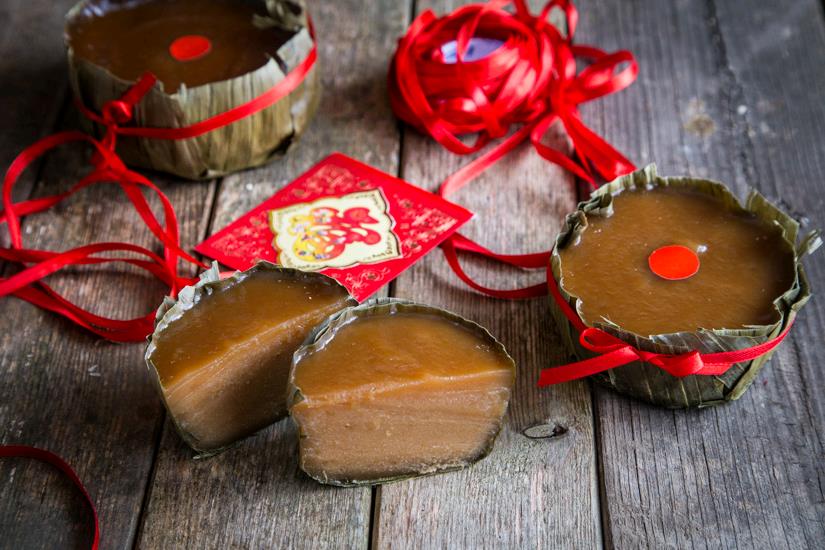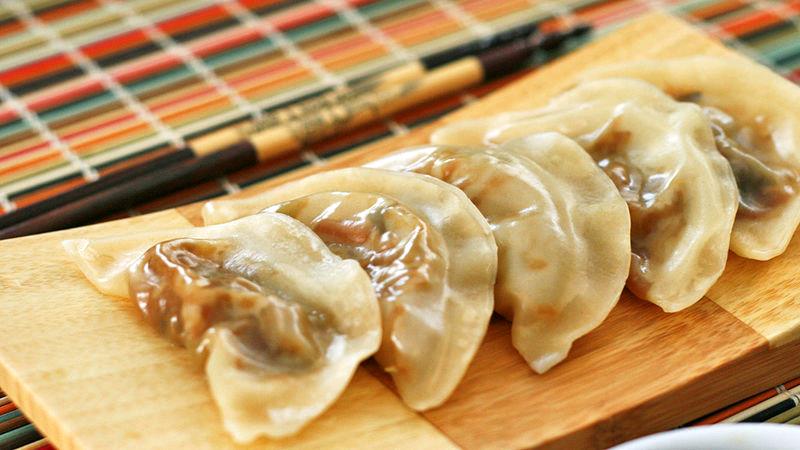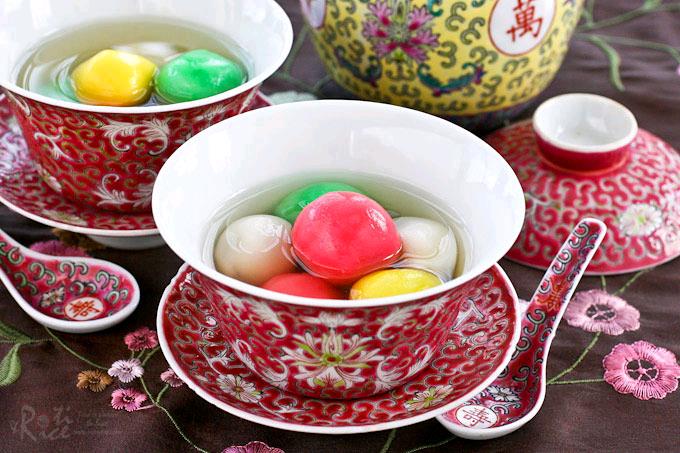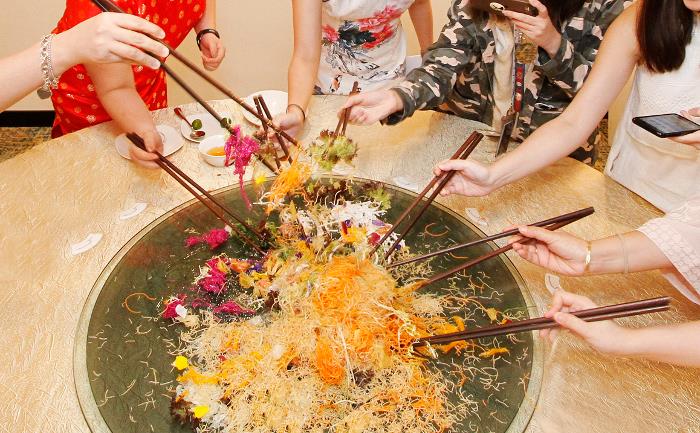Celebrate Lunar New Year With Symbolic Dishes
Food is the cornerstone of celebrations and when it comes to Chinese New Year, certain dishes are prepared and served for their symbolic meaning—to usher in a prosperous and auspicious year ahead. Here are some traditional dishes you may find in Singapore during Chinese New Year!
Nian Gao (Sticky Rice Cake)

Credit: What to Cook Today
The direct translation of nian gao is “year cake”, but nian gao is also a homonym for “(a) higher year”. Hence, the sweet glutinous rice treat is usually eaten during the new year for its symbolic meaning of going to greater heights in the year ahead.
Where to Buy: Tong Heng Traditional Chinese Pastries Specialist
Address: 285 South Bridge Road, Singapore 058833
Opening Hours: Sunday – Wednesday: 9am – 9pm; Thursday – Saturday: 9am – 10pm
Getting There (By MRT): 1-minute walk from Royal Plaza on Scotts Singapore Hotel
Jiao Zi (Dumplings)

Credit: tablespoon
For some, a comforting meal consists of a piping hot bowl of soup. For others, it is a moreish mixture of minced meat and finely-chopped vegetables enveloped in a piece of chewy dough skin—a dumpling.
While dumplings can be eaten year-round, these delectable parcels are traditionally eaten in the new year as they’re shaped to look like ingots, a currency used in China back in the day.
Where to Dine: Din Tai Fung Wisma Atria (Non-halal)
Address: 435 Orchard Road Level 4, Singapore 238877
Opening Hours: 11:30am – 9:30pm daily
Getting There (By Feet): 9-minute walk from Royal Plaza on Scotts Singapore Hotel
Where to Dine: The Dim Sum Place (Halal)
Address: 791 North Bridge Road, Singapore 198759
Opening Hours: Sunday – Thursday: 11am – 2:30pm, 5:30pm – 11pm; Friday & Saturday: 11am – 2:30pm, 5:30pm – 5am
Getting There (By MRT): Lavender MRT Station, 5 stops from Orchard MRT Station (3-minutes walk from Royal Plaza on Scotts Orchard Hotel)
Tang Yuan (Glutinous Rice Balls)

Credit: Roti & Rice
The moniker of this dessert literally refers to what it’s made up of—round balls in soup. The classic Chinese dessert is typically served with tiny glutinous rice balls in a sweet broth, however, other renditions of it contain black sesame paste, crushed peanuts or even red bean paste (to name a few options) that oozes out as you bite into them.
The round shape of these chewy treats represents togetherness and unity within the family, and their smooth exterior is symbolic of a smooth-sailing year ahead.
Where to Dine: Mei Heong Yuen Dessert
Address: 6 Raffles Blvd, 03-207, Singapore 039594
Opening Hours: 11am – 10pm daily
Getting There (By Feet): City Hall MRT Station, 3 stops from Orchard MRT Station (3-minutes walk from Royal Plaza on Scotts Orchard Hotel)
Spring Rolls

Credit: Nagi
Named after the holiday they’re traditionally prepared for—Spring Festival (i.e. Chinese New Year)—spring rolls are traditionally eaten to welcome the arrival of spring!
The golden hue of the fried spring rolls represent gold bars to welcome wealth and prosperity for the new year.
Where to Buy: Old Chang Kee Far East Plaza
Address: 14 Scotts Road, #01-K3, Singapore 228213
Opening Hours: 7am – 11pm daily
Getting There (By Feet): 1-minute walk from Royal Plaza on Scotts Singapore Hotel
Yu Sheng

This is one dish you cannot have without making a mess on the dining table!
The yu sheng (or lo hei), is a Cantonese-style raw fish salad commonly eaten by Chinese Families in Singapore and Malaysia; but unlike your usual salad with lettuce, tomatoes, cucumber and the lot, the ingredients in the yu sheng tends to be symbolic of prosperity and abundance—such as raw fish, shredded radish, carrots, ginger, pomelo, to represent luck, wealth and continuous prosperity.
Unlike a typical salad that you consume over a peaceful meal, there is a lot of tossing and Chinese greetings involved as it is popularly believed that the higher the toss, and the louder you say auspicious phrases as you toss, the better the fortune and prospects in the year ahead!


